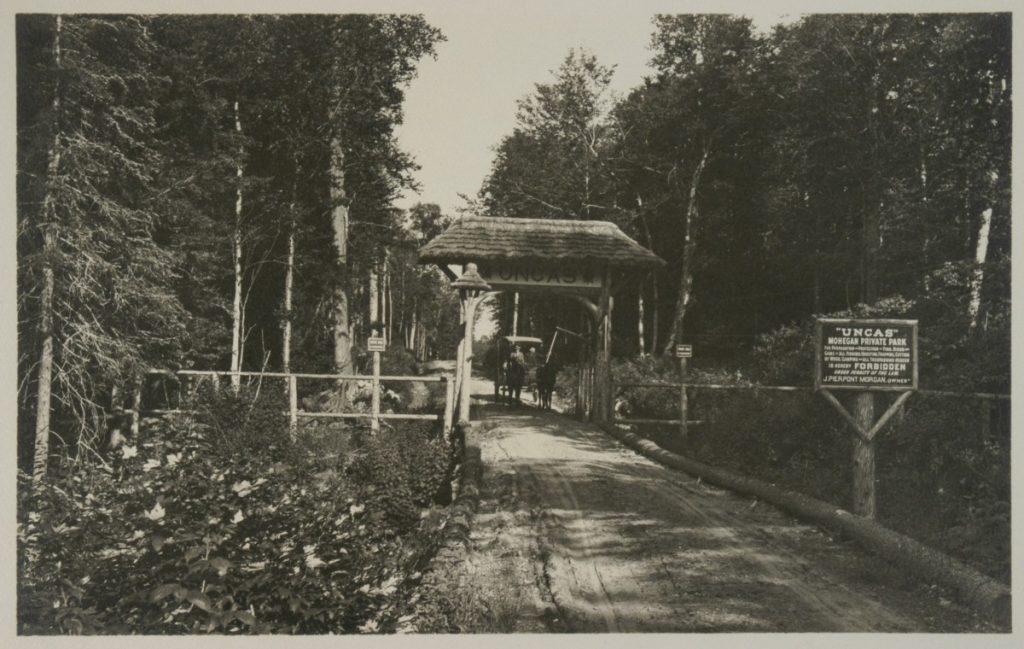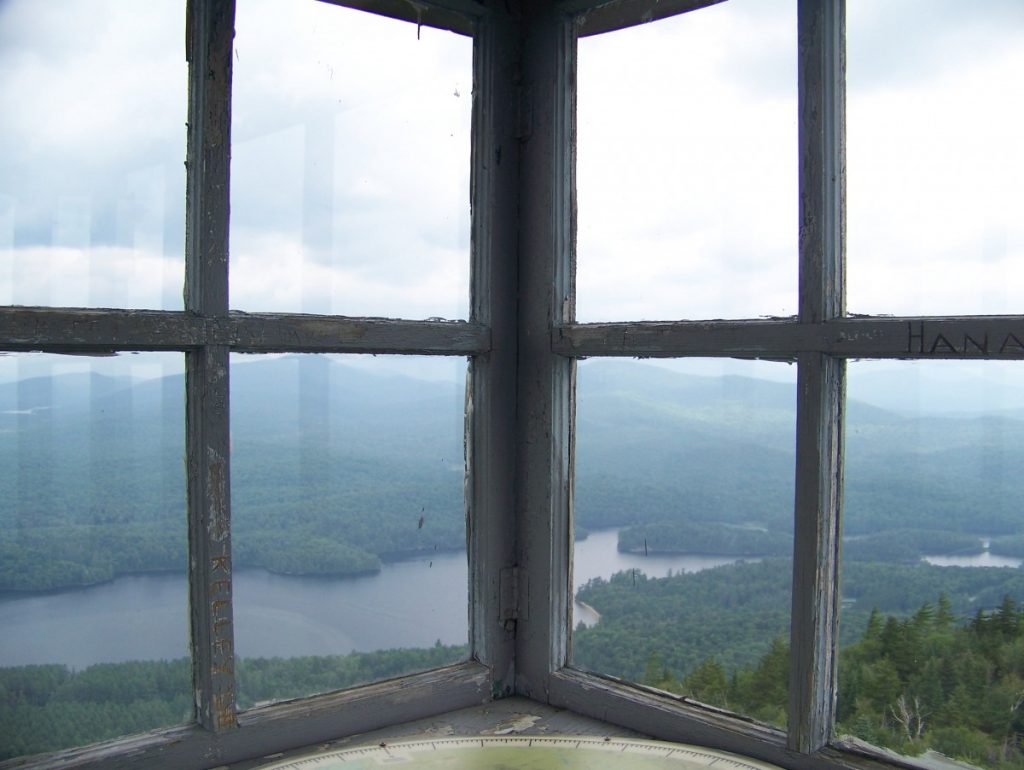
Entrance to J. Pierpont Morgan’s Great Camp Uncas. 1899. Source: New York State Museum.
When conservation efforts swept up the Adirondack region in the 1890s, many people had long been claiming and inhabiting New York’s Adirondack frontier. As the environmental historian Philip Terrie explains:
It had people living and working in it. It had land owned by individuals, families, clubs, and corporations. It had poor people dwelling in shanties, while down the road were millionaires who summered in mansions, where they played and postured like the European aristocracy they slavishly imitated. In between it had towns and villages where men and women worked at a host of occupations, raised families, went to church, and generally lived like many other Americans from coast to coast. It had land protected as forests forever and available to all for hunting, fishing, and camping and land where cut and run loggers savagely exploited the remaining resource in the name of a quick profit. [ref] Terrie, Contested Terrain. [/ref]
When the state began to enact conservation measures, there were already 16,000 people living in the Park. Many of its poorer residents, who had claimed rights to their land by making use of unoccupied space, found themselves becoming squatters as the state began to organize its records and properties to define the new Park’s boundaries. As the state began to exert new control over the lands of the Adirondacks, locals came to find themselves in the middle of a larger conflict over “an environmental crisis (deforestation and water loss) and a social crisis (urbanism and the undermining of traditional models of masculinity)” that “lay at the core of the nascent conservation movement.” In the late 19th century, the state created a “forest police” to enforce new game laws and the state’s property rights, stirring up resentment from local people who found that their traditional ways of living on the land—which, as they understood, had not contributed to this larger conflict—had suddenly become criminal acts. The Forest Commission noted that “attempted shootings were a persistent feature of the foresters’ profession. Meanwhile, locals contested, the real threats to the Adirondack forest were coming from the timber industry that clear-cut forests on a large scale and the forest fires most often caused by sparks from rail transportation and recreational tourists. Between 1891 and 1913, more than 1,180,000 acres of forest burned. The state’s response was to build staffed fire towers which sped up response times, but the mountaintop structures also “stood as a prominent symbol of the heightened state surveillance that conservation had brought to the region.” [ref] Jacoby, Crimes against Nature. [/ref]

View from the Goodnow Mountain fire tower.
While the state was defining and protecting its new territory in the Adirondacks, another threat to their subsistence livelihoods came with the establishment of private parks and Great Camps owned by New York’s elites. Like the state, private owners also employed police forces to watch the land and keep local people out of the spaces they had used for years. William Rockefeller’s private park even completely enclosed the community of Brandon, isolating people from the natural resources they relied on and causing Rockefeller to become known as “the Maker of Wilderness.” The Lake Placid Club, founded by Melvil Dewey, shows how exclusive private parks and sports clubs were in the Adirondacks. Dewey himself said that “No one will be received as member or guest against whom there is a physical, moral, social, or race objection, or who would be unwelcome to even a small minority.” [ref] Terrie, Contested Terrain. [/ref] Private parks were “the most hated facet of conservation,” and in 1903 tensions boiled over when Orrando Dexter, a private landowner “who had launched numerous lawsuits against local trespassers, was shot dead as he drove his carriage down a once-public road that he had enclosed within his estate.” [ref] Jacoby, Crimes against Nature. [/ref]
As Terrie explains, the Adirondacks have always had “a variety of constituencies intensely interested in the region’s future—from preservationists who wanted to maintain and extend protections, to local businessmen trying to support their families and entrepreneurs looking for a way to make a quick buck.” The Adirondack Park is indeed an unusual place where private and public lands are held together by a vision of the region as somehow unique from the rest of the cultivated and urbanized Northeast. But “the question of Adirondack history is, whose narrative of the land will prevail?” Even today, issues of how best to protect, use, and enjoy the landscape are at the center of Adirondack life. [ref] Terrie, Contested Terrain. [/ref]